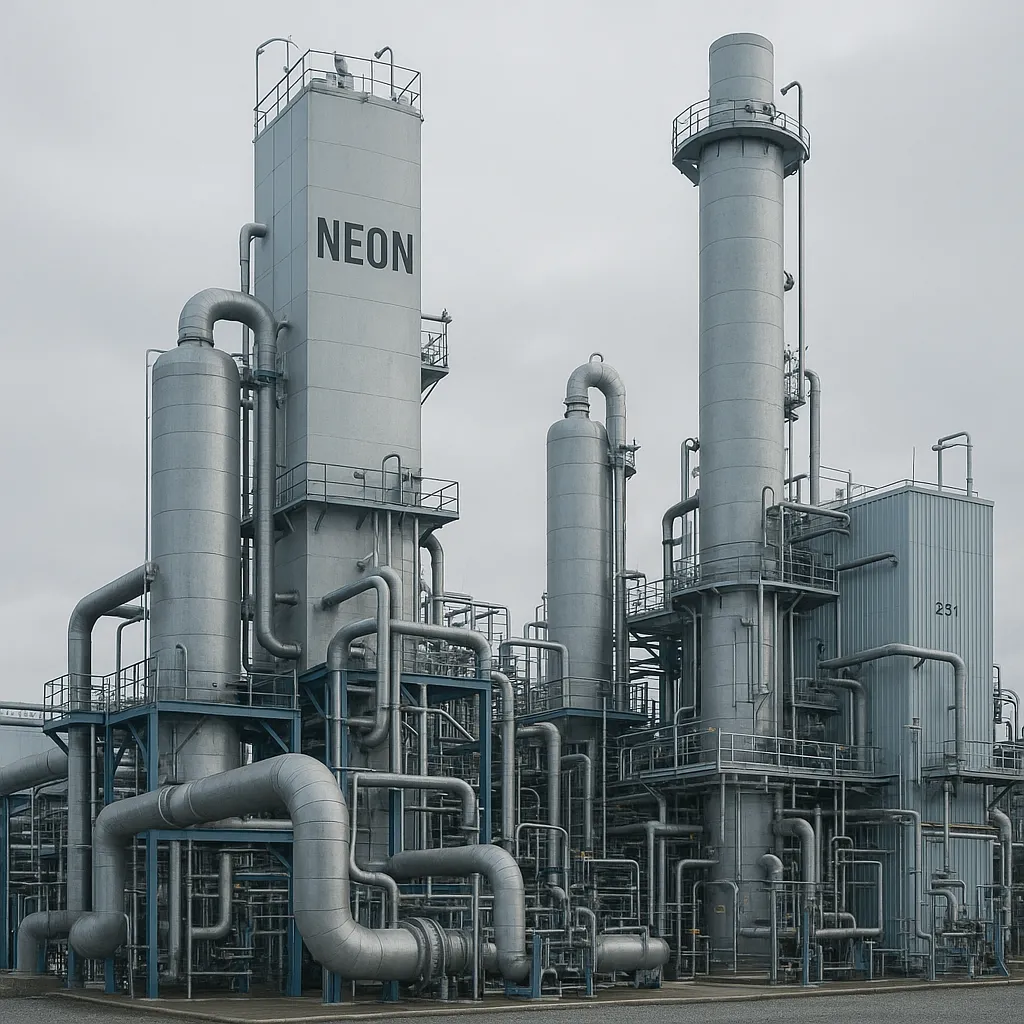Introduction
The neon element, a noble gas with the symbol Ne, holds the 10th spot in the periodic table. Known for its vibrant glow, neon has captured human fascination since its discovery. Found in trace amounts in the Earth’s atmosphere, the neon element powers iconic signs and cutting-edge technology. Its inert nature and unique properties make it a standout in chemistry. This article delves into the neon discovery history, neon gas properties, neon uses in lighting, and its role as neon in periodic table. As of April 2025, neon continues to shine in science and culture, illuminating our world in more ways than one.

Discovery of Neon
The neon element was first identified in 1898 by British chemists Sir William Ramsay and Morris Travers. They discovered it while studying liquefied air at University College London. After isolating argon, another noble gas, they noticed a bright crimson glow in their spectroscope. This glow came from a new element—neon. Ramsay named it “neon,” derived from the Greek word “neos,” meaning new. The neon discovery history marked a milestone in chemistry, as it completed the noble gas group in the periodic table.
Further studies confirmed neon’s presence in the atmosphere, about 0.0018% by volume. The neon element became a key subject in early 20th-century research. For instance, in 1904, scientists used neon to study atomic structure. The neon discovery history not only expanded the periodic table but also paved the way for neon uses in lighting and other applications, showcasing its scientific and commercial value.

Properties of Neon
The neon element is a colorless, odorless, and tasteless gas under standard conditions. It belongs to the noble gas group, known for their low reactivity. Neon gas properties include a boiling point of -246°C and a melting point of -249°C, making it ideal for low-temperature applications. With an atomic number of 10 and atomic mass of 20.18 u, neon in periodic table is stable, with three natural isotopes: neon-20 (90.48%), neon-21 (0.27%), and neon-22 (9.25%).
Neon gas properties also feature its ability to emit a bright orange-red glow when electrified. This occurs because electrons in neon atoms absorb energy and release it as light. The neon element has a density of 0.9 g/L at standard temperature and pressure, lighter than air. These neon gas properties make it perfect for applications requiring inertness and luminescence, such as in scientific experiments and commercial displays.

Applications of Neon
The neon element is best known for its role in lighting. Neon uses in lighting began in 1910 when Georges Claude, a French engineer, created the first neon sign. He filled a glass tube with neon gas and applied an electric current, producing a vivid glow. This innovation led to the iconic neon signs of the 20th century, lighting up cities like Las Vegas. Today, neon uses in lighting extend to advertising, art, and even airport runway markers due to its visibility in fog.
Beyond lighting, the neon element has modern applications. It is used in high-voltage indicators and vacuum tubes because of its inertness. In cryogenics, neon gas properties allow it to act as a refrigerant for extremely low temperatures, often in scientific research. For example, NASA uses neon in periodic table experiments to study planetary atmospheres. Additionally, neon plays a role in plasma displays, such as in older plasma TVs, where it helps produce vibrant colors. Neon is also critical in laser technology, particularly in helium-neon lasers, which are used in barcode scanners and precision measurements. While neon is less common in modern LED-based lighting, its unique glow ensures its cultural and scientific relevance.

Neon in the Periodic Table
Neon in periodic table sits in Group 18, the noble gases, alongside helium, argon, and krypton. The neon element is the second most abundant noble gas in the universe after helium, formed in stars through nuclear fusion. On Earth, however, it is rare, extracted as a byproduct during air liquefaction. Compared to helium, which is lighter and used in balloons, or argon, which is more abundant and used in welding, neon’s scarcity and glowing property make it unique. Its position as neon in periodic table highlights its stability—neon rarely forms compounds due to its full outer electron shell.
The neon element’s atomic structure includes 10 protons and 10 electrons, with a complete valence shell of 8 electrons. This makes it chemically inert, a hallmark of noble gases. Studies in 2024 confirmed that neon in periodic table can form exotic compounds under extreme pressure, such as neon clathrates. These clathrates, where neon atoms are trapped in a lattice of water molecules, form at pressures exceeding 150 GPa, conditions found in planetary interiors like Uranus. This discovery suggests neon’s potential role in understanding planetary chemistry. The neon element’s role in the periodic table underscores its importance in atomic theory and gas behavior.

Leave a Reply